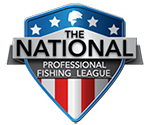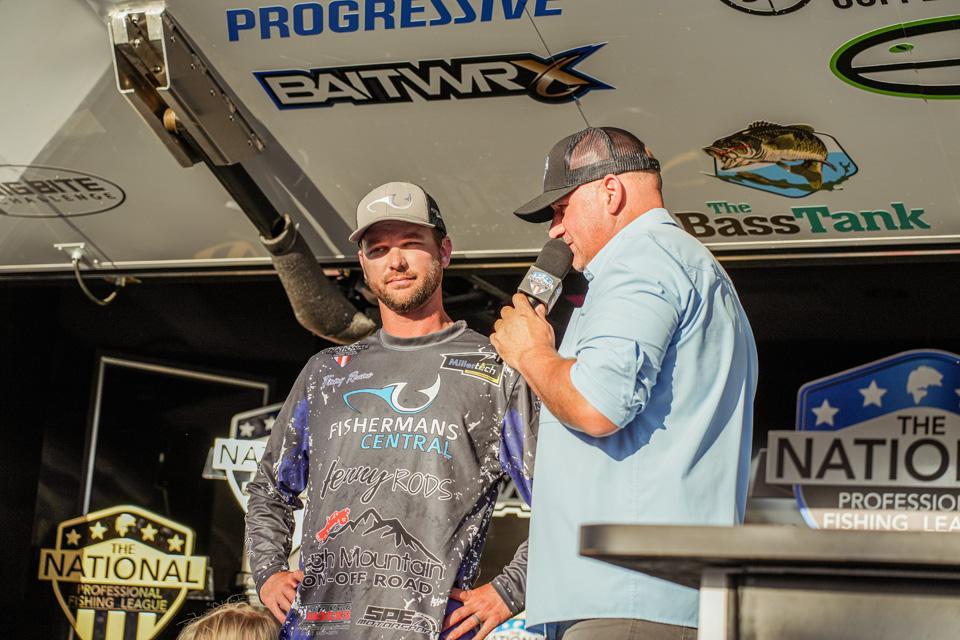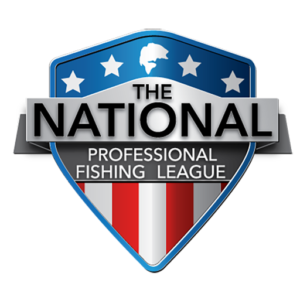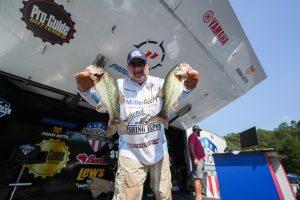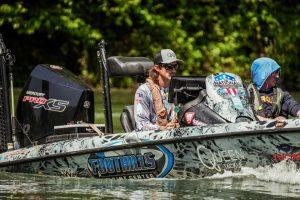Story by Ken Duke with Timmy Reams | Photos by Tanner & Travis Lyons
You’ve been there. It’s been a tough day on the water, and you have little to show for it. A couple of feeble bites, but only one or two small bass came in the boat, and it’s been frustrating.
Or maybe you’re fishing a tournament, and you need a fish to pick up some points so you can qualify for the championship or you’re just a fish or two short of a limit that could get you a check or even earn a win.
What should you do? How do you save the day in fall, when numbers are traditionally down, the fish are in transition, and limits can be hard to come by?
For answers, we go to Timmy Reams, the angler who has caught more bass and tallied more weight than any angler in NPFL history, and one of just two anglers who has fished every day of every NPFL event without ever zeroing. (The other is Richard Cooper.)
“Fall can be tough,” the West Virginia pro admits. “Lakes are turning over, water quality—both clarity and oxygen levels—can be rough, and it’s a true transition period when bites can be hard to come by. When that happens, I generally go to the simplest method I know. I wacky rig a Senko and fish shallow cover.”
Few options are simpler than that! In fact, the wacky stickworm is not just the go-to of the pros, it just might be the best way to help a total novice catch a bass. On a good day, a wacky stickworm can make bass fishing seem easy. On a tough fall day, it can save your bacon.
Of course, you need to know where to throw it. After all, bass aren’t everywhere, and in the fall it can seem like they aren’t anywhere.
“If I’m scrambling in the fall—when water temperatures are cooling from about 70 degrees down to roughly 50 degrees—the first thing I want to do is find the bait, and that usually means shad or other baitfish,” Reams says. “In the fall, they start pushing to the backs of creeks, and they get there before the bass. If I can some shad with my side scan or down scan, I can usually find some bass nearby, and sometimes—if the shad are thick—I can see them without using my electronics.”
Once he’s located bait, Reams is confident he can find and catch bass…at least a few. But whereas a lot of anglers will opt to match the hatch with tiny baitfish imitations or go big with swimbaits and glide baits, he likes the 5-inch Yamamoto Senko in Green Pumpkin Black Flake (297), Natural Shad (306), or Black Blue Laminate (904).
“It’s a bait I can fish on relatively light line and put into some tight, high-percentage places,” he says. “I rig the Senko wacky style on a 2/0 Owner Mosquito Hook, with 12- to 15-pound-test Sufix 832 braid tied to a 6- or 7-foot leader of 8-pound Seaguar Tatsu Fluorocarbon with a Modified Alberto Knot. The knot is super thin, so it comes through the guides without a hitch.”
Reams’s combo is a Shimano Vanford 3000 spinning reel clamped to a Temple Fork Outfitters Taction Bass 7-foot medium action spinning rod (TB S 704-1).
He generally does not use an O-ring or other harness to hold his hook in place on the soft Senko. It means he goes through quite a few baits as they tear off the hook, but he has a lot of confidence in the setup, which is as simple as it gets. Just run the hook through the center of the stickworm so it hangs evenly off both sides…much like a novice might hook a nightcrawler.
The castability of the bait and the sensitivity of his combo are a key to his confidence and success. He can cast and skip the bait virtually anywhere, its lifelike action is almost irresistible, and his hook-up ratio is through the roof. If a bass inhales it, he’s as good as hooked!
“To get my bait in front of a bass, I go looking for shallow cover in the backs of creeks,” Reams says. “I’m not looking at my electronics that much because I can scan the options much more quickly with my eyes. Docks, stumps, blowdowns or anything else that might hold a bass is going to get at least one cast and maybe more.
“Even if I haven’t had a shallow bite all day, I’m still going shallow under these conditions because I’m confident that there are bass living in shallow water all year long.”
Reams likes his odds even more if the water has good visibility—at least two feet. Isolated cover tends to be better than abundant cover because it will concentrate the bass and he can fish it faster. Also, a piece of isolated cover is more likely to hold a big fish.
“I try to be stealthy since this is a shallow water pattern,” Reams explains, “but if you’re fishing a lake htat gets a lot of fishing or boating pressure, that’s generally not critical. What is critical is making a good cast to your target.”
His first cast to any target is almost always going to be made to the deep end of the cover—a dock, a blowdown, a stump, whatever. If nothing’s home, he works his way shallower, letting the bait fall and work its dying prey magic.
“Strikes on the wacky Senko are almost always going to come on the fall,” he says. “The only reason to pick it up or twitch it is so it can fall again. After it’s fallen next to the cover and been twitched once or twice, it’s time to reel it in and make another cast to another part of that cover or another piece of cover in the area.
“Just remember, you can’t fish too shallow in the fall,” he says. “They’ll sometimes get dirt shallow at this time of year, and a lot of anglers will miss out on those fish.”
His pattern works. Over the course of 67 tournament days in the NPFL, Reams has brought at least one bass to the scales every day. It’s an impressive streak that shows no signs of ending.
